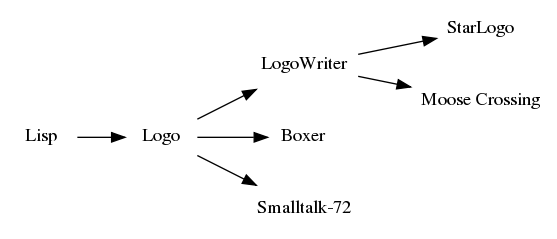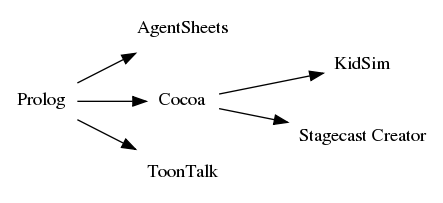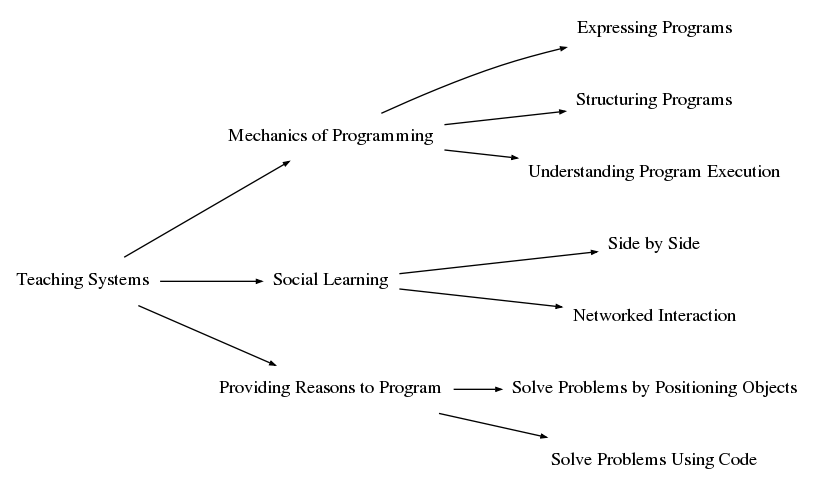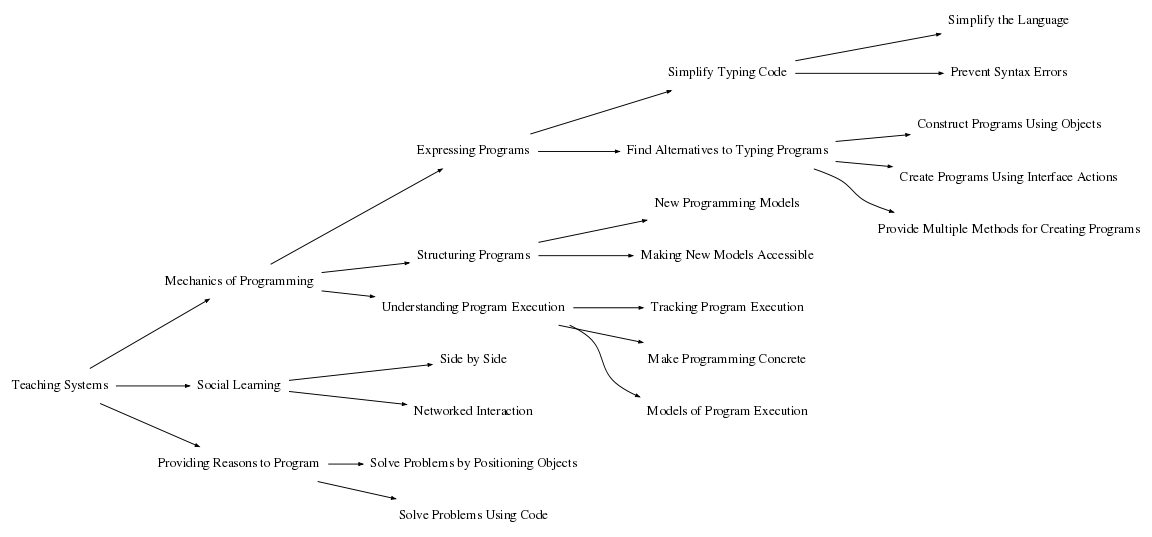Taxonomy of programming environments for novices
Different types of Taxonmy:
- Five levels
- What makes programming hard?
- Clusters
Содержание |
Five levels
Initial Learning Environments
- Level 0
- Age range 2-7 years. Drag-and-Drop or simpler. Teaches planning (sequence) only. Requires no abstraction. Contains no significant use of: functions, variables, iteration, indexed data structures, conditional execution.
- Examples: Daisy the Dinosaur, LightbotJR, ScratchJR, Pictomir
- Level 1
- Age range 5-10 years. Drag-and-Drop. Requires no abstraction (or small amounts). Contains none or few of: functions, variables, iteration, indexed data structures, conditional execution.
- Examples: ScratchJR, Pictomir, Lightbot, Kodu, Blockly, Hopscotch, Scratch, Tynker
- Level 2
- Age range 8-14 years. Drag-and-Drop or textbased. Includes some abstraction. Contains some or most of: functions, variables, iteration, indexed data structures, conditional execution.
- Examples: Kodu, Blockly, Hopscotch, Scratch, Tynker, NetLogo, Alice, AppInventor, Looking Glass, Snap!
- Level 3
- Ages 12 years and up. Drag-and-Drop or textbased. Includes abstraction. Contains all of: functions, variables, iteration, indexed data structures, conditional execution.
- Examples: Scratch, Tynker, NetLogo, StarLogo Nova, Snap!, Alice, AppInventor, Looking Glass, StarLogo Nova, BlueJ, KidsRuby
- Level 4
- Ages 14 years and up. Teaches an industry-level. Turing-complete programming language. Advanced, with extensions available. Contains all of: functions, variables, iteration, indexed data structures, conditional execution.
- Examples: Squeak, Codecademy
What makes programming hard?
Mark Guzdial believes that each novice programming environment (or family of environments) is attempting to answer the question, "What makes programming hard?". In his article "Programming Environments for Novices" Guzdial focuses on three families that have been particularly influential in the development of modern environments:
- The Logo family of programming environments, that began as an off-shoot of the AI-programming language Lisp
- The rule-based family of programming environments, that drew from both Logo and Smalltalk-72, but even more directly, Prolog.
- The traditional programming language family of novice programming environments, which tried not to change the language, but instead provide new student-centered supports for existing programming languages.
Logo family
The answer to the question of "What makes programming hard?" for the Logo developers was another question. When Logo was first being developed, people didn't know that programming was going to be so hard for so many. Programming was still a curiosity, an activity practiced only by the few who had access to the still-rare machines. The Logo developers asked instead "Why should students program?"

The Logo family of novice programming environments
The rule-based family of programming environments
Another set of answers to the question "What makes programming hard?" includes "The interface" (as diSessa said) but also "The kind of programming" (as Kay said).

The rule-based family of programming environments
The traditional programming language family

Family of novice programming environments based on supporting traditional programming languages
????

Next step

